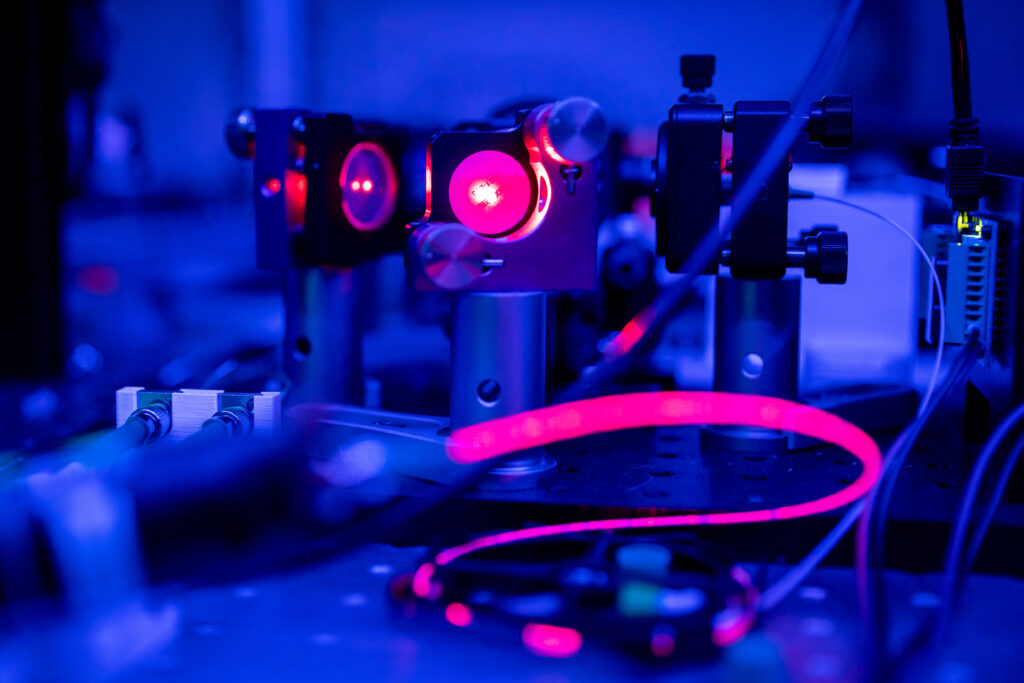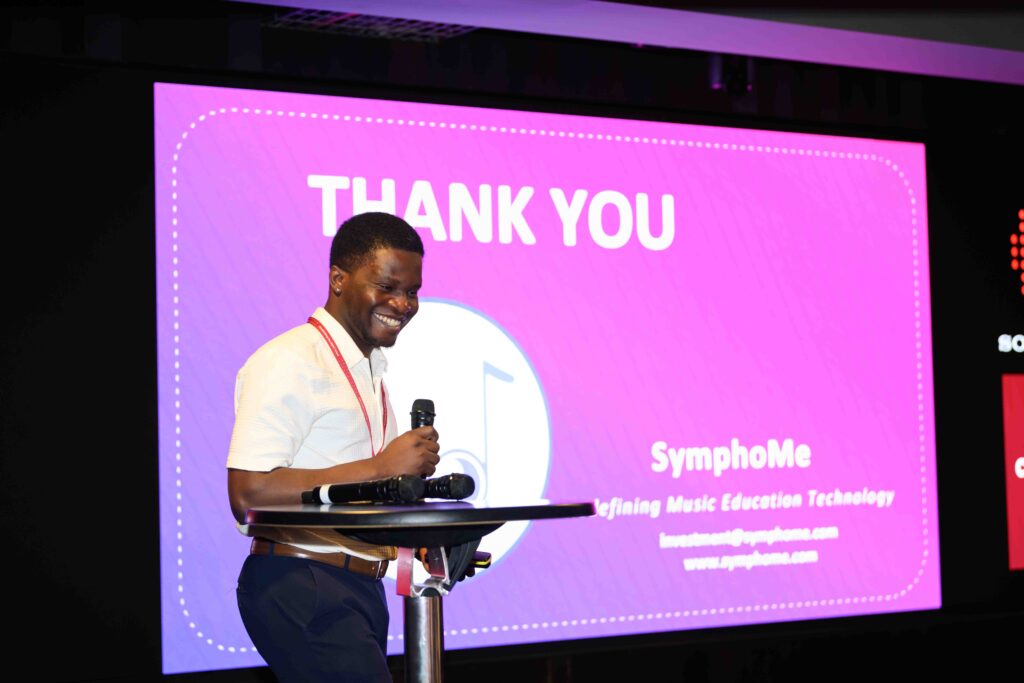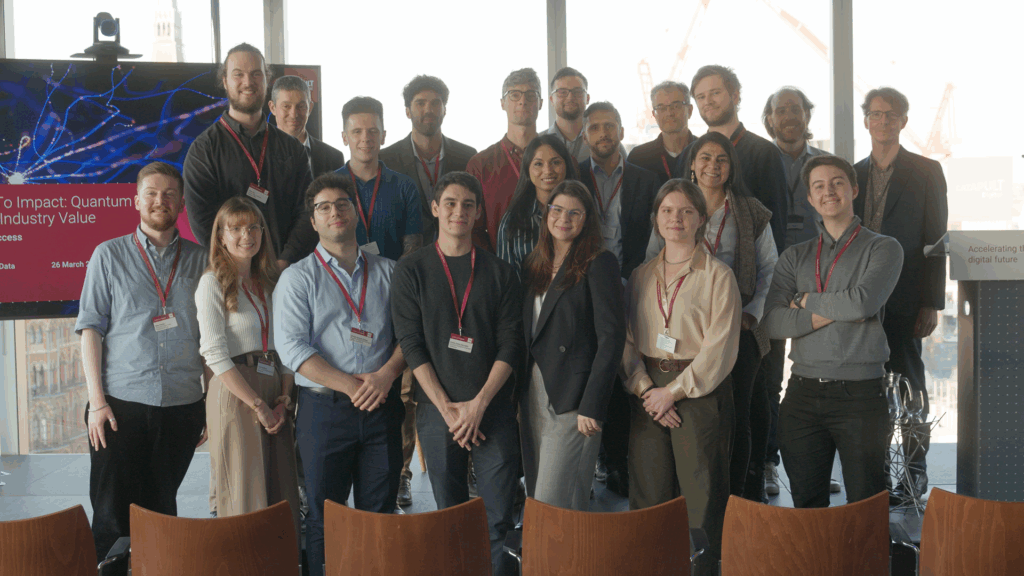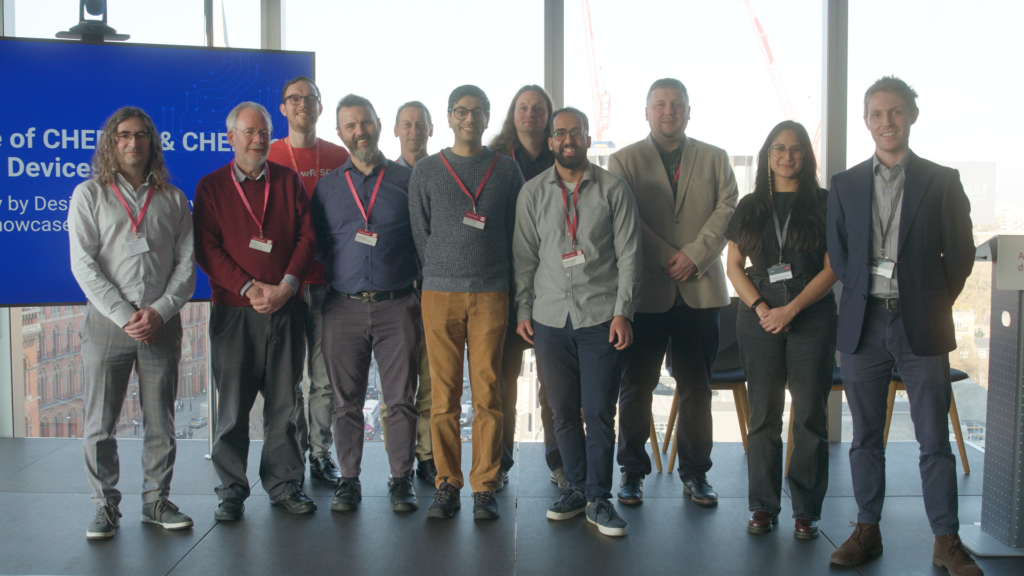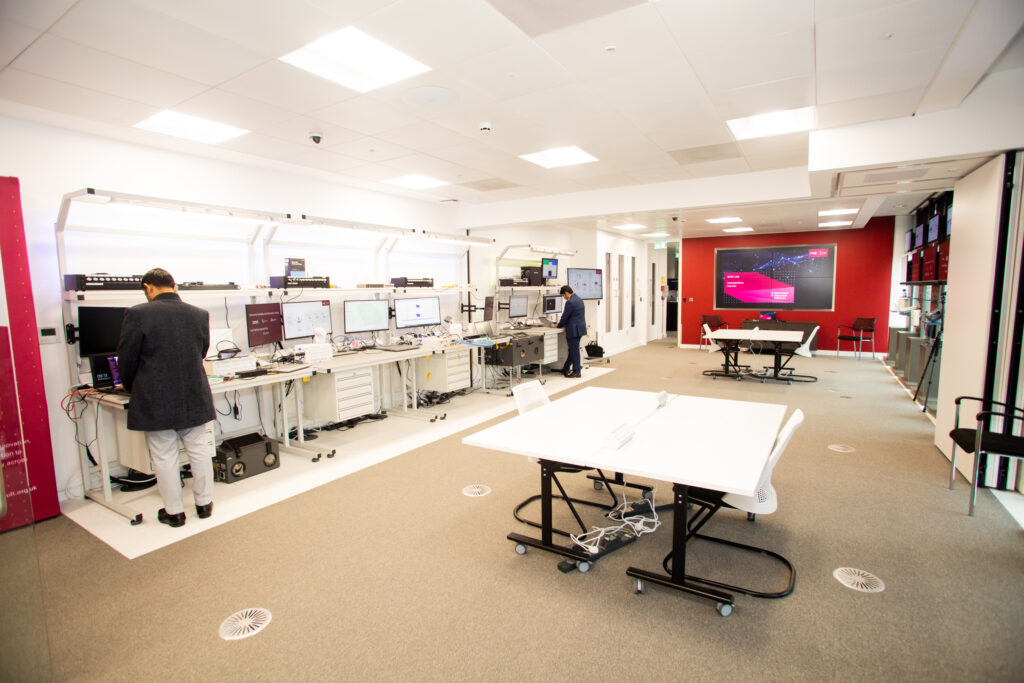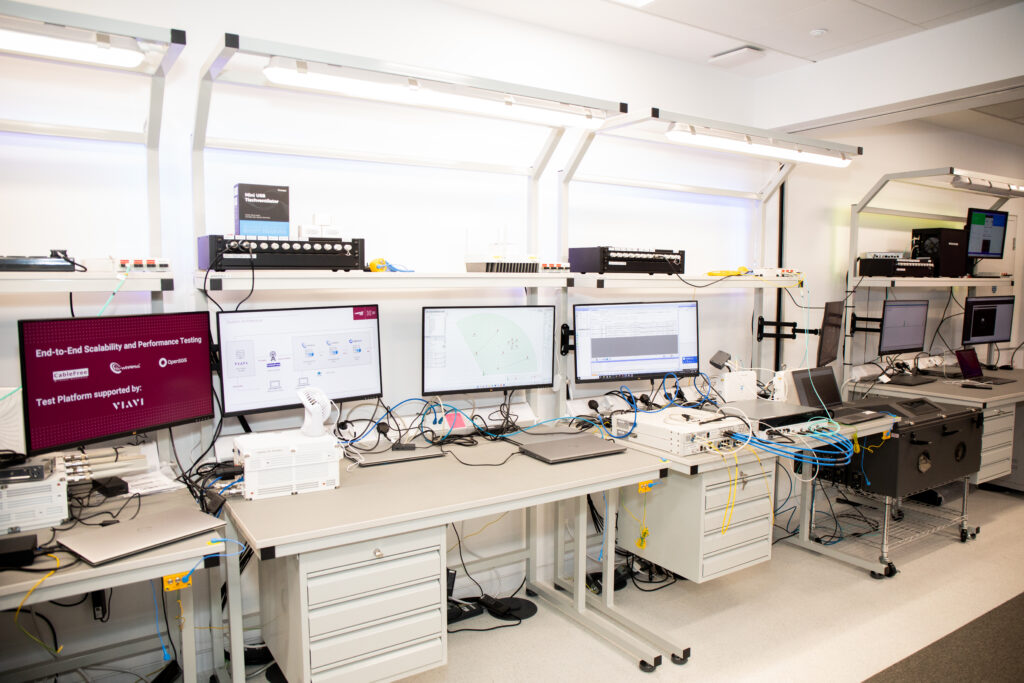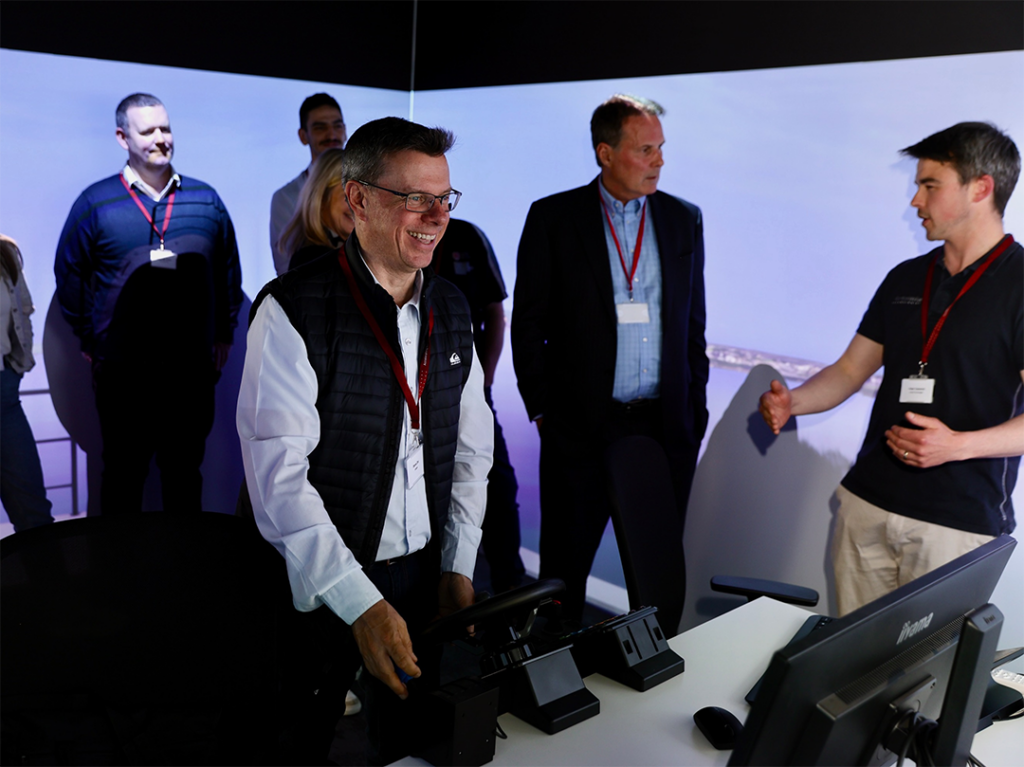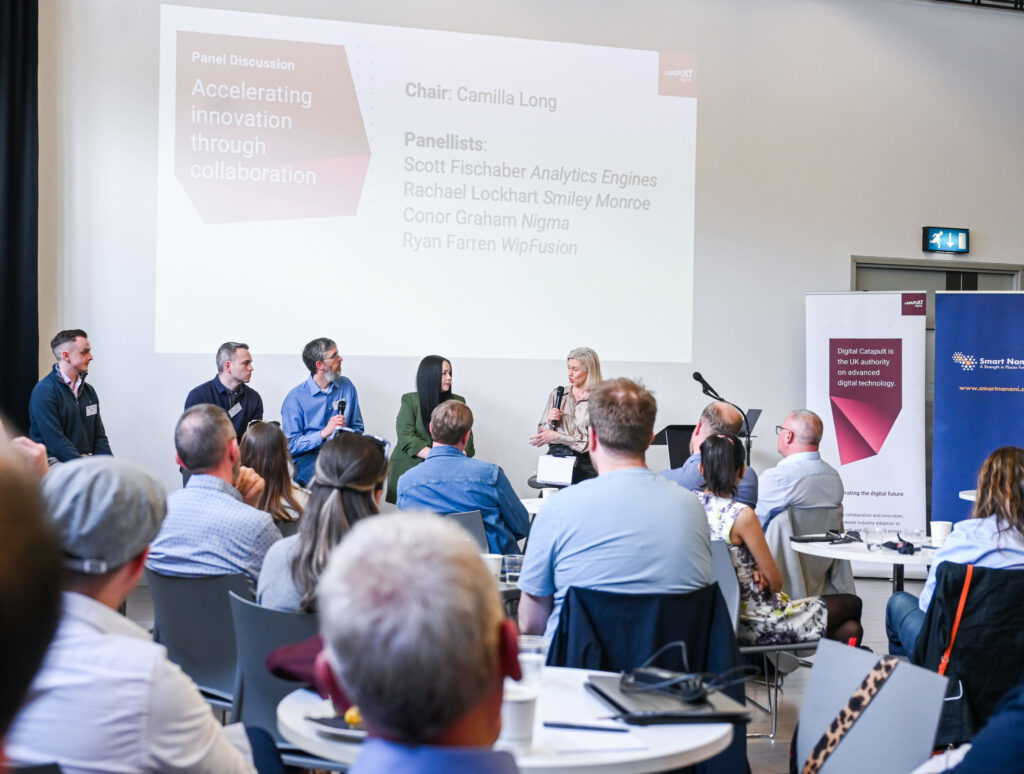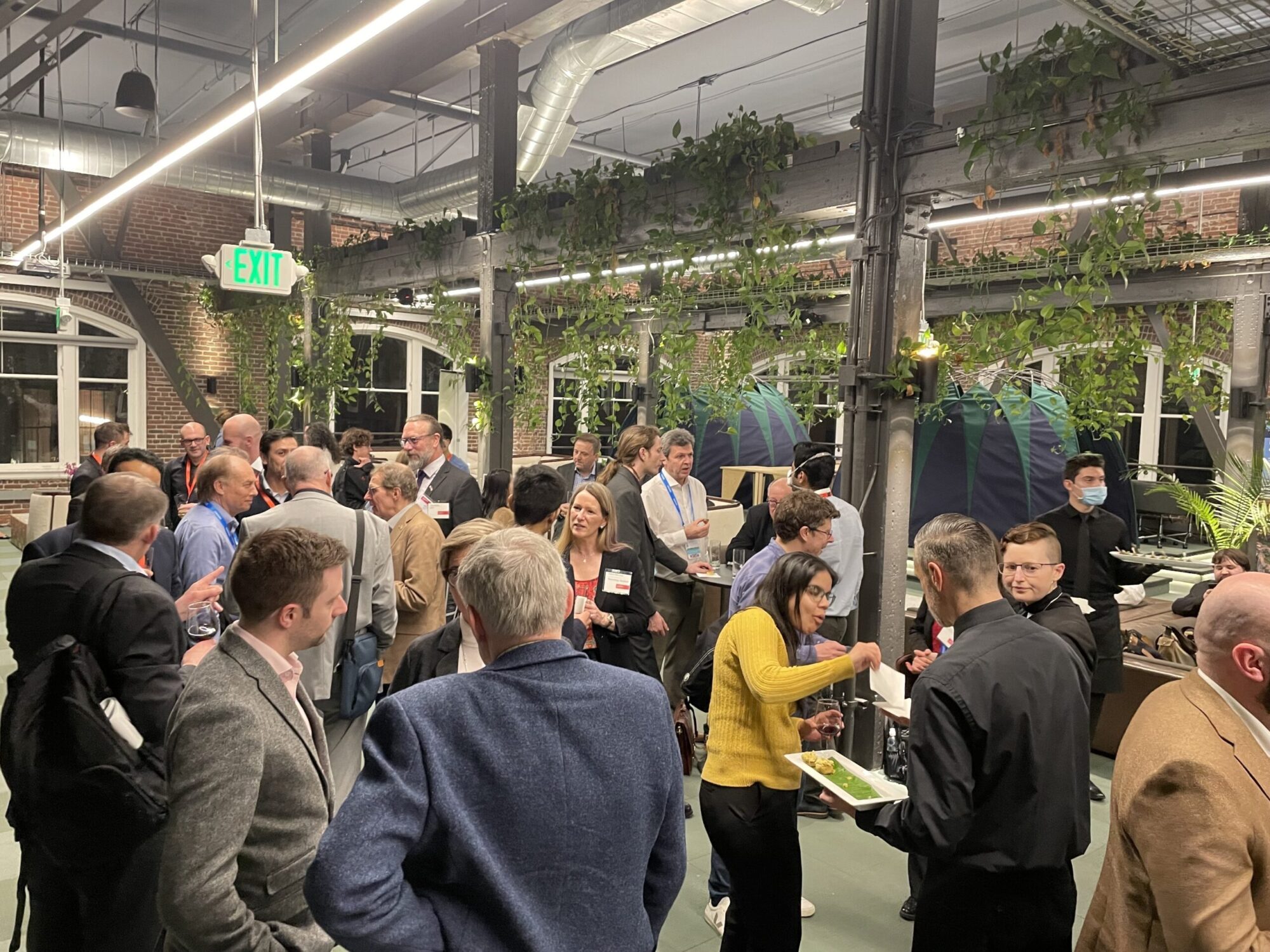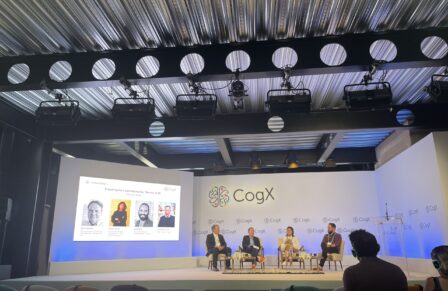Dr Cillian McPolin is a senior photonics technologist at Digital Catapult, focused on advancing the adoption and development of light-based technologies.
Many standout technology conferences, exhibitions and events are held early each year in the United States – including CES in Las Vegas, South by Southwest in Austin and SPIE Photonics West in San Francisco. The latter is an annual photonics conference that brings together experts from across the globe and is an opportunity to connect with the UK photonics community, meet photonics leaders and survey the latest technological developments. This year I was privileged to attend as part of the UK trade mission to represent Smart Nano NI consortium, along with fellow members Yelo and Seagate Technology. Smart Nano NI is a consortium of organisations from across Northern Ireland work collaboratively to form a cluster of expertise in photonics, smart manufacturing and nano technology.
Photonics is the science and technology of light and encompasses two distinct areas: industrial and integrated technologies. Industrial photonics focuses on discrete components that enhance industrial processes, while integrated photonics relates to emerging on-chip technologies. At Photonics West 2024, the rapid and ongoing progress in both domains was palpable, with a plethora of innovations on display.
Here are my five key takeaways from San Francisco:
- Miniaturisation of photonic components
One of the most significant trends in photonics, particularly evident at the exhibition, is the ongoing miniaturisation of components, together with on-chip integration, providing a raft of benefits in terms of power, efficiency, functionality and scalability.
For example, hyperspectral imaging, which provides more spectral information compared to conventional cameras, is suited to numerous applications such as environmental monitoring, waste sorting and agriculture. A number of such systems were exhibited at Photonics West, where a particular emphasis was on the efforts to reduce their size and cost, and also undertaking classification with edge computing devices. This reduction in size enables the incorporation of hyperspectral imaging into a wider range of platforms, such as in terms of industrial robotics and UAVs. Even greater miniaturisation is being achieved via on-chip integration, which, for instance, opens up space applications, by mounting them on satellites for monitoring the health of vegetation and integrating them on exploration vehicles to identify specific minerals, which provides information on the environmental conditions present during their formation. This also highlights the work towards integrated photonics – converting bulky systems into miniaturised devices, incorporating a multitude of photonic components onto a chip. In this context, an array of novel chip-scale devices were presented at the exhibition, such as photonic chip-based inertial sensors for autonomous navigation, on-chip solid state lidar and disposable biosensors.
- Focus on photonic chip development
The development of photonic chips – integrated photonic circuits – relies upon semiconductor manufacturing and there were a number of European photonics foundries at the exhibition outlining their services across various material platforms, as well as end applications. Aside from transceivers, integrated photonics is still in its early stages – there are a multitude of challenges to be addressed with respect to material compatibility, manufacturing precision, temperature sensitivity, standardisation, testing and characterisation. In particular, the design of integrated photonic chips is in its infancy compared to electronics, where there are hurdles in terms of standardisation and interoperability. In view of this, a range of new tools and design flows were presented at Photonics West, including open-source tools and process design kits.
- Photonics as a key enabler of quantum technologies
The discussions of integrated photonics for quantum technologies were also particularly fruitful, highlighting the common challenges faced by classical and quantum photonics chips. Foremost amongst these are challenges in terms of manufacturability and performance, such as with regard to material platforms, packaging of components and system losses. In addition, there are specific hurdles unique to quantum systems, such as the development of on-chip quantum light sources. The intertwined nature of photonics and quantum technologies, across sensing, computing and communication, was further highlighted by the Quantum West exhibition. This was particularly evident in the case of quantum sensing systems, which are advancing towards wider commercialisation, such in the case of diamond-based quantum magnetometers – these systems offer room temperature operation and compact designs for material inspection, controlling prosthetics and geophysics, to name a few applications.
- Ongoing optimisation of photonics for industrial processes
Industrial photonics relates to systems for enabling and enhancing industrial processes and includes light-based technologies for monitoring and sensing, such as for inspection, condition monitoring and quality control. Looking ahead, discrete industrial photonic technologies will continue to be critical as they are further iterated upon and refined, particularly for the manufacturing sector – there is significant potential for their wider adoption in the UK, as evidenced by the Smart Nano NI project and acceleration programme, which has allowed a range of businesses to explore photonic technologies, including spectroscopy and vision systems.
- Strong UK leadership in photonics
The UK has particular strengths within photonic and quantum research, together with compound semiconductors, as highlighted by the national strategies on semiconductor and quantum technologies. The UK Trade Mission, organised by the Department of Business and Trade, was especially valuable for gauging the areas of interest for US investment – e.g. photonics for biosensing and quantum – together with the common pitfalls and guidance on building traction in the US market for UK companies. It also brought together the photonics organisation from across the whole of the UK, including the photonics clusters, to explore areas of mutual interest and opportunity, and thus served as the starting point for ongoing discussions.
There is significant potential to build upon the semiconductor and photonic expertise to position the UK as a leading partner in the integrated photonics space, which will be driven by the end applications. As an example, the rapid development of AI may play a significant role in the ramping up of manufacturing of photonic chips, as chip-scale optical interconnects would provide high data transfer speeds whilst maintaining low power consumption. Other examples include disaggregated and neuromorphic computing, together with quantum computing and communication. In order to further build a photonic chip supply chain within the UK, it requires the close collaboration between partners at each stage of the chain, namely design, manufacturing, testing and system integration. In addition, strengthening ties with international partners will also be key.
In short, industrial photonics will continue to mature and grow in its adoption, particularly in manufacturing, whilst integrated photonics offers a plethora of opportunities for new technologies, including across the priority areas of quantum, AI, semiconductors, engineering biology and future telecoms. Addressing both domains of photonics will be crucial to ensuring the technological and economic impact of the UK sector – from food production and cloud to manufacturing and medical applications.
To learn more about Digital Catapult’s work in industrial and integrated photonics, contact [email protected]. For more information on Smart Nano NI consortium visit www.smartnanoni.com












